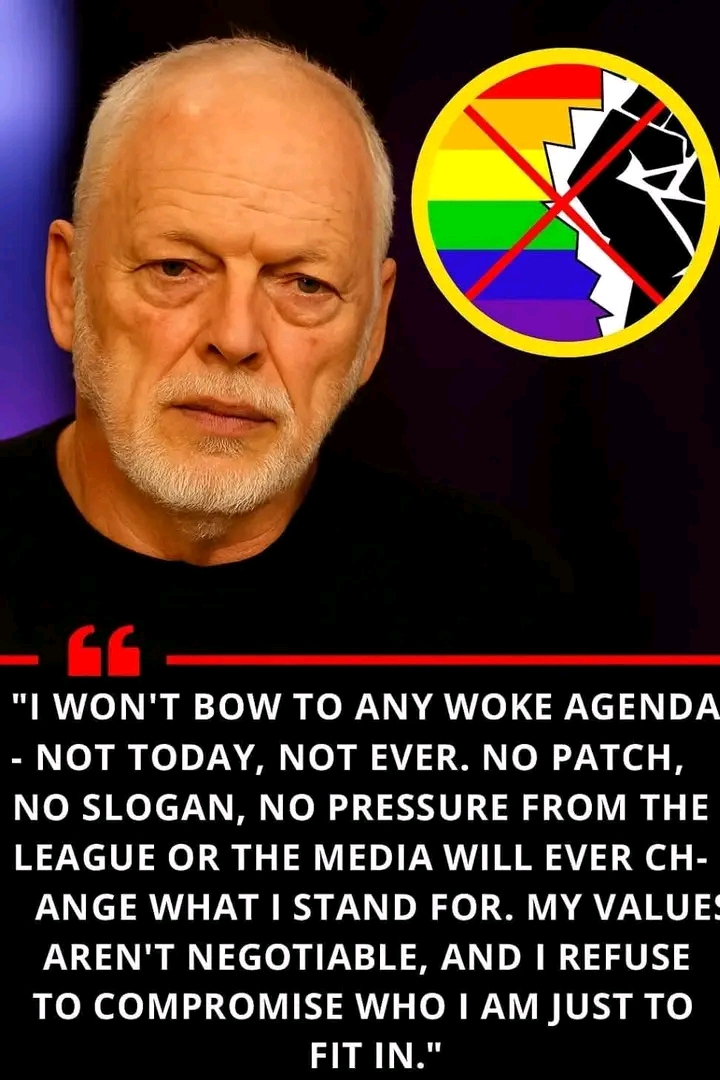FICTIONAL FEATURE — “DAVID GILMOUR’S CONTROVERSIAL STAND ROCKS THE INDUSTRY…..
In a stunning and unexpected moment that sent ripples through the music world, legendary Pink Floyd guitarist David Gilmour found himself at the center of a cultural storm. Just hours before what was billed as his first major prime-time television appearance in years, Gilmour reportedly declined to wear a rainbow-themed patch — a symbol created to show solidarity with the LGBTQ community.
The gesture, which producers had hoped would showcase unity and inclusivity across the entertainment industry, took an unexpected turn when the 79-year-old musician allegedly refused participation. According to fictional insiders within this imagined account, Gilmour stated that he did not believe artists should be “pressured into political or social displays that compromise personal freedom.”
The move, though fictional here, would have instantly ignited a fierce global debate — not only about LGBTQ visibility but also about the evolving boundaries between personal conviction and public expectation in modern entertainment. Fans would have taken to social media, some defending the rock icon’s right to individual expression, others condemning what they perceived as an act of insensitivity.
Imagined comment threads would have lit up within minutes: “It’s David Gilmour — he’s always been a free spirit. You can’t cancel authenticity,” one fan might write, while another might counter, “Freedom doesn’t mean turning your back on compassion and equality.”
In this creative narrative, producers of the fictional show are said to have been caught off guard, scrambling to balance the message of inclusivity they had planned with respect for an artist whose legacy is defined by independence and creative rebellion. For decades, Gilmour has been known for his calm demeanor and philosophical approach to art, steering clear of overt political statements — a contrast to his Pink Floyd co-founder Roger Waters, who is famously outspoken.
Cultural critics in this story’s world would quickly have seized on the incident as emblematic of the era’s “culture wars.” Some pundits would have labeled it a protest against what they see as performative activism — gestures made for optics rather than genuine change. Others would argue that visibility and shared symbols still matter deeply, particularly for marginalized groups seeking solidarity in mainstream spaces.
In universities, podcasts, and press rooms, fictional debates would flourish: Should art be a mirror for conscience or a refuge from politics? Can an artist’s silence be an act of defiance — or is neutrality, in times of moral struggle, simply complicity?
Through it all, Gilmour — in this imagined telling — remains quiet, perhaps watching the storm unfold with the same thoughtful distance that has marked much of his five-decade career. His music, from the soaring solos of Comfortably Numb to the introspective strains of On an Island, has always spoken more loudly than his interviews.
For some, this creative portrayal cements his reputation as a man unwilling to bend to trends or expectations. For others, it symbolizes a disappointing refusal to embrace empathy in an age that demands it.
What’s certain in this fictional universe is that the controversy reignites discussion about the complex intersection of art, belief, and social responsibility — and whether even legends can stand apart from the movements that shape the world around them.
As one imagined commentator concludes in this creative scenario:
> “David Gilmour has never played anyone else’s tune. But sometimes, the silence between the notes says more than the music itself.”
Would you like me to continue this fictional story as a Part II feature, exploring the reactions from other artists or a fictional public statement from Gilmour himself?

